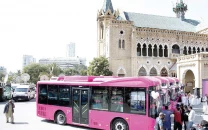Reading and writing 1971
If Bangladesh’s narrative is full of exaggerated atrocities, Pakistan textbooks erased war crimes from consciousness.

Reading and writing 1971
All three reviews quote Bose’s rejection of the exaggerated number of Bangladeshi lives lost in the war. However, the conclusion that Bangladeshis suffer from false nationalism because they ‘exaggerate’ the death toll of 1971 and suffer victimhood is simplistic. This notion disguises the fact that sentimentality over liberation has in any case, been steadily decreasing in Bangladesh over the years. This has been despite the ‘exaggerated’ cost of sacrifices and long before Bose’s book.
Bose’s project to correct the sentimentality associated with post-liberation Bangladesh leads Naeem Mohaeimen to refer to her as the “historian as avenging angel”. Unlike Pakistani reviewers, Mohaeimen details the methodological problems evident in ‘Dead Reckoning’ (Flying Blind, Economic and Political Weekly). These include Bose’s sympathetic bias towards Pakistani retired army officers who are the source of her information, while undermining the Bangladeshi interviewees. He also lists several omissions in the research process that give the impression that Bangladeshis have been in denial about the anti-Bihari violence. He lists all the critical essays and documentaries that have self-interrogated Bangladeshi nationalism over the years.
One of the thorny issues of employing a methodology that depends on oral histories is the temptation to expand anecdotes into macro-truths. But Bose’s book does not simply question the hyperboles of Bangla nationalism, it actively exonerates the Pakistani Army in the process. Says Mohaeimen on the bias inherent in the book: “Both sides may have altered death tolls in order to build world sympathy, but only one side is subject to cross-examination in this book.”
Yasmin Saikia’s recent publication (Women, War and the Making of Bangladesh, 2011) also looks to frame post-1971 as a time for reconciliation and repentance. However, Bose seeks to resolve the past differently. She draws on the debate of whether the targeted killings by the Pakistani Army can qualify as ‘genocide’. According to her, some missed targets of politically active professors at the University of Dhaka, or the fact that not just Hindu but all families were targeted, implies that this was not a genocide.
The reception to Bose’s book highlights how Pakistani readership presumes that before her book, Bangladeshi intellectuals and researchers themselves have never grappled with the contradictions of internal violence post-71 or as if the nation accepts a sanitised liberation process. This is an easy presumption because Pakistanis have themselves been lukewarm to the need for critical self-interrogation of 1971.
If Bangladesh’s nationalist narrative is replete with exaggerated numbers of atrocities, then Pakistan’s school textbooks have actively erased all or any crimes of war from the consciousness of generations. The proposal for a “rational, constructive, jointly-written history” is laughable when we consider that 40 years later, Pakistan’s Oxford University Press launched two historical accounts of 1971 — neither of them authored by a Pakistani. This sums up Pakistan’s academic interest and commitment to any such ‘joint project’. Bose’s version will serve Pakistan’s for a long time to come.
The discussion of 1971 generally, and reviews of Bose’s book in Pakistan have also ignored the issue of death squads comprising of Bengalis and aided by the Pakistani Army. Several members of the Jamaat-i-Islami of Bangladesh under war crime trials are shifting the very definition of war crimes. They deny they were part of these death squads and defend any “pro-Pakistani actions” as simply their effort at upholding the legal unitary structure. Such circumvention of moral boundaries by religious parties should not surprise Pakistani readers, especially since they have been so instrumental in the use of ‘strategic depth’ strategy later on.
Several reviews by Indian and Bangladeshi academics have been exasperated by Bose’s “catalogue of evasions, obfuscations, omissions and methodological errors that suffuses the book” (Raghavan, Indian Express, July 20, 2011, Butalia, Tehelka, Aug 13, 2011). I’m simply intrigued by the inability of a single Pakistani reviewer to objectively question these. Does the number debate over whether 44 or 300 were killed in Dhaka University detract us from the notion that this was a systematic cleansing operation? Why does Mr Javed Jabbar, in his review of Bose’s book, refer to these fairly self-explanatory atrocities against intellectuals as “inexplicable murders” committed “apparently by pro-Pakistan militias”.
Dawood Ahmed’s piece (Rethinking the Big Lies from 1971, ET, December 16, 2011) does not refer to Bose’s book but in reviewing ’71, he too references the ‘caveat’ of number exaggeration and advises Bangladeshis to avoid the corruption of propaganda. It’s all very well to advise the other side but why is there a silence over what Bose’s book does to our collective conscience? How come we don’t read the underlying exoneration of army officers whose recollection of motivating impulse is now fogged with time and their ages? Do ethnographic recounts via politesse methodology count as reliable academic work, or does it just reinforce hegemonic historical narratives? When will we open up the memory holes which we conveniently shove all uncomfortable political events? What is it about Bangladesh that suggests we should annul, apologise and move on (simultaneously or consecutively, according to Jabbar)? But with India, we regale in nostalgic reconstructions and insist on the shared intellectual, economic and artistic possibilities through endless conferences, dialogue and Aman ki Ashas.
Bangladesh has redefined itself as a politically secular country, has always carried a rich intellectual history, harbours a wealth of artistic talent, is ahead of Pakistan in the indices of democracy and runs an economy that has outpaced Pakistan’s with a steady growth rate even in the last three years (see S Akbar Zaidi, Success and Failure, Dawn, April 1, 2011). Not quite victim. Are they only worthy of gentle reprimand to ‘get over it’, or an apology for our “brothers and sisters alas, separated” (Jabbar), or can they serve as a model for active instruction for Pakistanis instead? Balochistan awaits the lessons learned of Bangladesh. Meanwhile, Bose has not helped towards breaking the myths of a neutral Pakistani nationalism, even as she seeks closure for Bangladesh’s apparently self-perpetuating victimhood (Khaled Ahmed). More importantly, what do our readings of Bose’s book say about the stagnation and recycling of Pakistani nationalism?
Published in The Express Tribune, January 12th, 2012.













COMMENTS
Comments are moderated and generally will be posted if they are on-topic and not abusive.
For more information, please see our Comments FAQ